The Temperance Movement in Wooster
- Home
- Society & Social Movements
- Exhibits
- The Temperance Movement in Wooster
by Jacob Kowall, revised by Jordan Wilson
The Temperance Movement first gained momentum due to the efforts of late nineteenth century social reformers in Ohio, such as the Women’s Christian Temperance Union and the Anti-Saloon League. Seeing these nearby developments as an opportunity to enact social change, women in Wooster fought to end the sale of alcoholic beverages in the city altogether. The efforts of these supporters had a major effect on the liquor and beer industry of Wooster, though they ultimately failed in their goal of eradicating alcohol use from the city.
“The Infernal Traffic”
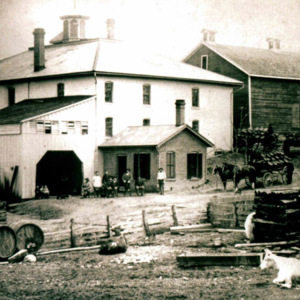
In the late 1800s, many men and women belonging to the Protestant churches of Wooster began to resent the presence of taverns and the problem of drunkenness in the city. They were disturbed by the effect that the city’s 16 local saloons were having on the behavior of men both in public and in the home.1 Throughout this time, crime in Wooster and the surrounding area was often associated with alcohol. An 1884 article from the Wayne County Herald covering a manslaughter in nearby Shreve explained how the case was “clearly an outgrowth of the infernal drink traffic … as long as we tolerate this high pirate on society, this barbarous saloon system, we may expect such things to occur in every community.”2
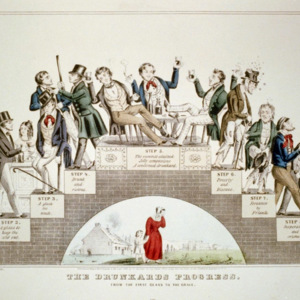
Seeing it as their moral responsibility to battle the perceived evils of alcohol, a group of Wooster women banded together in the spring of 1874 and formed the Women’s Temperance Union. These reform-minded women endeavored to follow their Christian principles by actively fighting Wooster’s vice and ridding the city of the saloon system for good.3
The Women’s Crusade
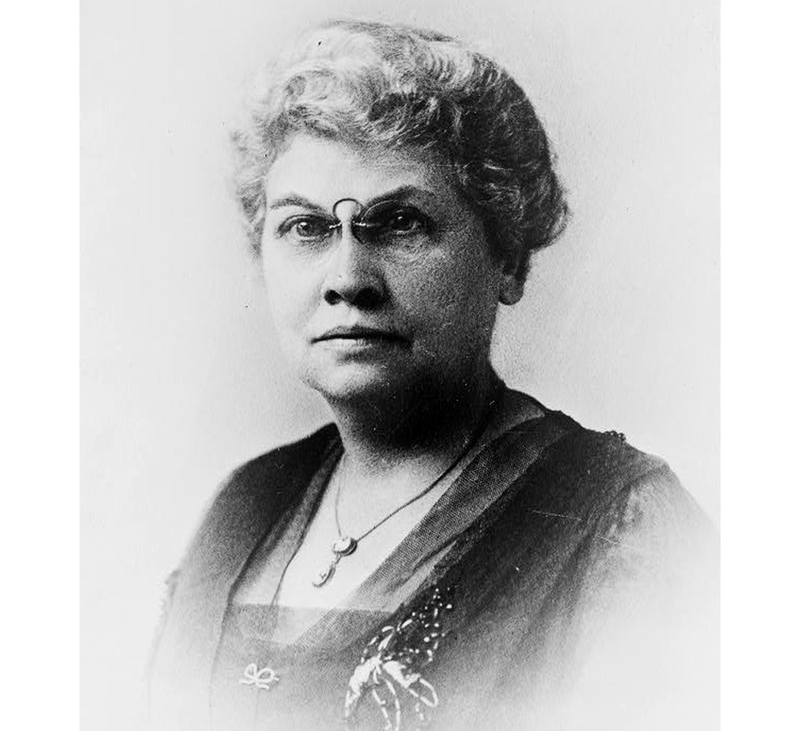
Throughout the nation, members of the Women’s Christian Temperance Union were employing tactics to fight for their goal of ending the sale and consumption of alcohol. Basing their actions on those of this national group, the members of Wooster’s Women’s Temperance Union held regular prayer meetings and urged citizens and saloon keepers to sign pledges agreeing not to consume or sell alcoholic beverages. When many of the tavern keepers continued to sell alcohol, the women paraded through the city, singing hymns and praying outside of the saloons. The city was clearly gaining attention in the national temperance movement since in May of 1874, the future president of the WCTU, Francis Willard, visited Wooster to give a talk to the women of the city. A dozen saloons stopped serving alcohol due to the efforts of the Temperance Union in 1874. One man immediately put his tavern up for auction after attending a prayer meeting hosted by the organization. However, despite the efforts of the Women’s Temperance Union, city regulations made to restrict the sale of alcohol were never enforced, and business at Wooster’s saloons carried on as usual after the initial temperance endeavors of 1874.
Pictured left: Ella A. Boole was President of the WCTU from 1925 to 1933. She attended the College of Wooster (Class of 1878) during the height of the nineteenth century wave of the temperance movement and was surely inspired by the efforts of Wooster’s Women’s Temperance Union.
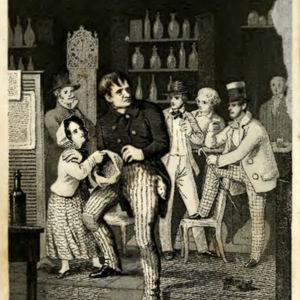
Undeterred, the women of the city continued to promote temperance by hosting prayer meetings and convincing citizens to sign pledges promising abstinence from alcohol. In 1877, the Wooster Dramatic Club even aided in the movement and hosted productions of the temperance drama, “Ten Nights in a Bar Room,” in the Quinby Opera House. However, the Women’s Temperance Union ultimately failed its goal of eradicating the sale of liquor in the city during the late nineteenth century.4
Pictured right: The novel Ten Night’s in a Bar-Room and What I Saw There, written in 1854 by T.S. Arthur, was a popular tool used by promoters of temperance throughout the nineteenth century to reveal the effect of alcoholism on family life.
Temperance in the Twentieth Century
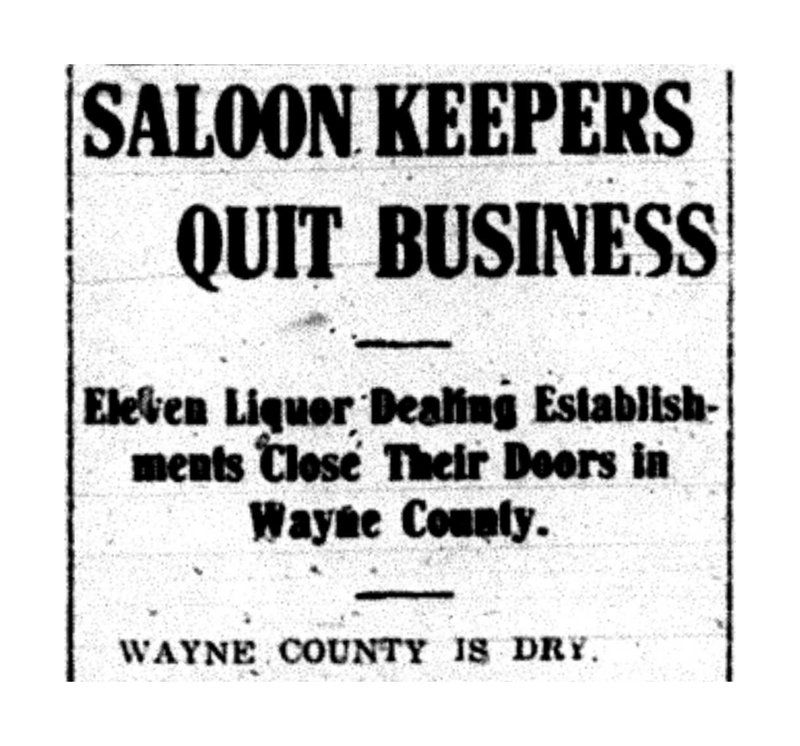
In the years leading up to prohibition, the temperance crusade once again gained support throughout the nation. In 1908, Wayne County, along with 34 other Ohio counties, enacted a local option law under Ohio’s Rose Law, allowing the county to vote itself dry for a period of three years. The sale of alcoholic beverages was prohibited, and Wayne County’s eleven saloons were forced to close. Wayne’s two alcohol manufacturers, the Wooster Brewing Company and the Cedar Valley Distilling Company remained open by selling their wares to buyers outside of the county. The Wooster Brewing Company also increased its production of artificial ice to make up for the lost profits.
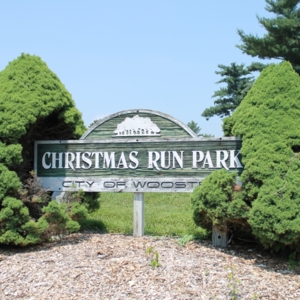
However, increased pressure before the establishment of Prohibition forced the Wooster Brewing Company to cease its production of beer in 1916 and sell its plant to the Mougey Beverage Company, which bottled colas.5 Temperance had finally doomed the manufacture of alcoholic beverages in the county. When Prohibition took effect, several smugglers were arrested while trying to bring alcohol into Wooster. Using money collected from fining these violators of the prohibition laws, the city was able to purchase land on which it later built Christmas Run Park.6 Although the temperance and prohibition movement died out in Wooster as it did across the nation, it still was instrumental in shaping the social atmosphere of the city as it transitioned into the twentieth century.

Citations
1 Lucy Lillian Notestein, Wooster of the Middle West, Volume I (Kent: Kent State Univ. Press, 1971), 128.
2 “The Shreve Tragedy,” Wayne County Herald, March 29, 1884.
3 Paul Locher, When Wooster Was a Whippersnapper (Sugarcreek, OH: Carlisle Printing, 2008), 151-154.
4 Wooster in 1876, ed. Arnold Lewis (Wooster: Wooster Art Center Museum, 1976), 107-108.
5 Robert A. Musson, M.D., Brewing Beer In The Buckeye State, Volume 1: A History of the Brewing Industry in Eastern Ohio from 1808 to 2004 (Medina, OH: Zepp Publications, 2005).
6 “Five Days for Liquor Dealers,” Wooster Daily News, October 31, 1908; “Saloon-Keepers Quit Business,” Wooster Daily News, November 9, 1908; Harry S. McClarran, “Harry’s Mystery Question,” Summer Quarterly Newsletter, (Wooster: Wayne County Historical Society, 2013), 5.
How to cite this page
MLA: “The Temperance Movement in Wooster.” stories.woosterhistory.org, http://stories.woosterhistory.org/the-temperance-movement-in-wooster/. Accessed [today’s date].
Chicago: “The Temperance Movement in Wooster.” stories.woosterhistory.org. http://stories.woosterhistory.org/the-temperance-movement-in-wooster/. (accessed [today’s date].
APA: (Year, Month Date). The Temperance Movement in Wooster. http://stories.woosterhistory.org/the-temperance-movement-in-wooster/.

